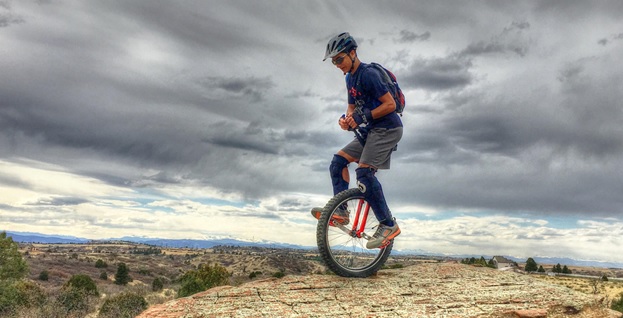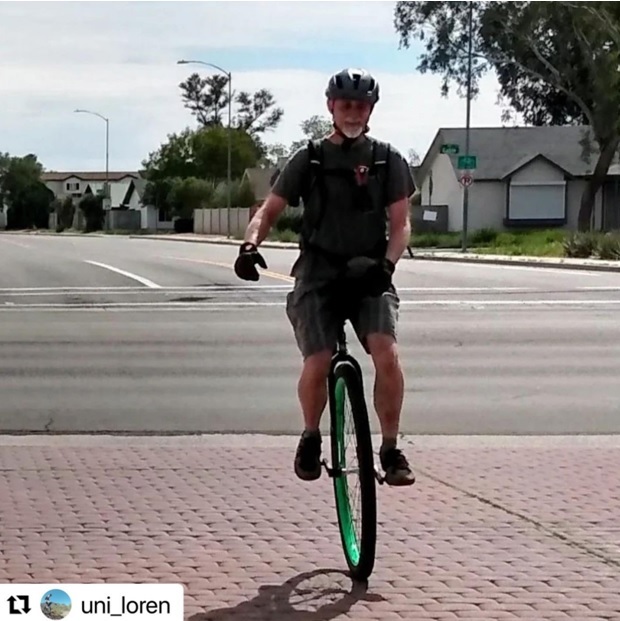The Ultimate Guide to Unicycle Cranks
08/17/23
Once you get familiar with the sport of unicycling, it won’t take you long to figure out that some unicycles can be too big for a rider.
Unicycle tire size and saddle height adjustment are two of the most important keys to fit.
But you know what else is? Crank length. For some riders, it is one of the most important considerations to make in terms of handling, speed, and cranking power.
Here are some of the most important things you know about changing your crank arms and what sort of a difference it can make.
Square Taper Cranks vs. ISIS (Splined) Cranks
One of the first things you need to be cognizant of is the hub axle interface. Not all cranksets are the same.
There are two main classes: square taper cranks and splined cranks, of which one of the most popular types is called an ISIS crank.
If you remove the crank arms from your unicycle and the end of the crankset - where it joins the hub axle - is square in cross-section, then you have square taper cranks.
Square taper cranks are affordable to produce and easy to make from a mechanical standpoint, so they are fairly common on beginner and affordable unicycles.
Square taper cranks are also good for learners since they keep the price down. Just make sure you never ride them loose, or they may deform, which will ruin either the crankset itself or the hub axle and the wheel.
Splined cranks, like ISIS cranks, have long teeth running the length of the crank-axle interface. These create a greater surface area and so when properly installed are stronger and more durable than square taper cranks. They are common on higher-end unicycles and mountain unicycles.

With that being said, if you’re ever planning on replacing your cranksets, make sure you get a set of replacement cranks that fits your hub axle interface.
Once you know what this is, you can start to turn your attention to crank arm length.
Crank Length: Longer for More Control
All else being equal, if you swap out your current unicycle’s cranksets for a pair of longer crank arms, you will reap greater control over the one-wheeler.
The longer the crank arms, the greater the leverage you can exert over the wheel through the hub axle. It takes less force to manipulate the pedals as the length of the crank arm increases.
Interestingly, the length of the crank arm also impacts pedal stroke and biomechanical performance.
Ideally, for most riders, you want a pedal length so that your leg is almost straight (but not fully extended) at the bottom of the revolution. This will help prevent your knees from getting bunched up at the top of the revolution.
It’s also better for riders that need greater control over the agility and maneuverability of their unicycles - so for muni riders and trick riders, usually longer crank arms are better.
Crank Length: Shorter for Greater Speed
The opposite is also true once you flip the paradigm and shorten the crank arms. The shorter the crank arms, the faster you will be able to go.
Since there is no chain drive on most unicycles, the speed you can attain is a product of the wheel’s radius. Since there is a shorter overall revolution with shorter crank arms, and you’re limited by the wheel’s radius, the faster you can get the wheel to make a revolution, the faster you can go.
So, by bringing the crank arm’s length closer to the center of the wheel, the faster you can pedal the overall machine.
There is a catch, though. It’s harder to crank shorter crank arms, even though your top speed will be faster - so keep this in mind.
All the same, distance riders and commuters can benefit from shorter crank arms because of the increase in speed they provide.
Crank Length “Formulas”
Unless your goal is to put the largest crank arms you can on your unicycle, or to maximize your speed, you, like most riders, are probably looking for a nice balance in terms of power, speed, and handling.
There are two formulas that cyclists use to determine the optimal crank length: tibia length and inseam length.
One discipline suggests that the optimal crank length for you is 20% of your inseam length. So, if you have a 28” inseam, the optimal crank length would be 5.6”, which is 142mm. That’s pretty close to 138mm, a common standard size.
Another common formula is to take 41% of your tibia length. Take an average tibia length of 15” for an example. This yields a 41% metric of 6.15”, which equates to 156mm, which is pretty close to 150mm standard crank arms.
There’s no one-size fits all approach, but both of these metrics give an approximate gauge for an appropriate crankset length that will offer a good balance of speed and handling, and which won’t tire you out too soon.

By Riding Style
Another way to go about choosing appropriate crank arms for your unicycle is to look at it from a perspective of how or what you ride.
For instance, if you’re riding a mountain unicycle with tires between 24” and 29”, then the cranksets that will offer you a good balance of handling and power will likely be between 150mm and 170mm.
Let’s say you’re a beginner riding a unicycle with a smaller wheel - like 20”. Between 114mm and 125mm are suitable for most beginner unicycles.
Of course, there are all sorts of other considerations to make here, and it’s equally important to remember that some crank arms are too large for some unicycles.
For instance, if you’re learning on a beginner unicycle with a 16” wheel, then the max size crankset you can use is 100mm, otherwise, your pedals will run into the ground.
We’ve covered this topic in detail on a page dedicated to it: “What Crank Length Should Be on Which Unicycle?” For more information on sizing a unicycle’s crank arms according to unicycle size and riding discipline, consult the previous link.
Questions? Call Us!
Looking for a new set of square taper cranks to give you an edge in terms of speed or handling? Stick with some of the tips and observations in this article and remember, sometimes you just need to try it to find the right fit for you. What works for some riders - even if they follow the calculations mentioned here - might just not be a good “fit” for your purposes.
So try out a few different crank lengths for your unicycle and see what works best for you, and if you have questions you can always reach out to us at 678-494-4962.

